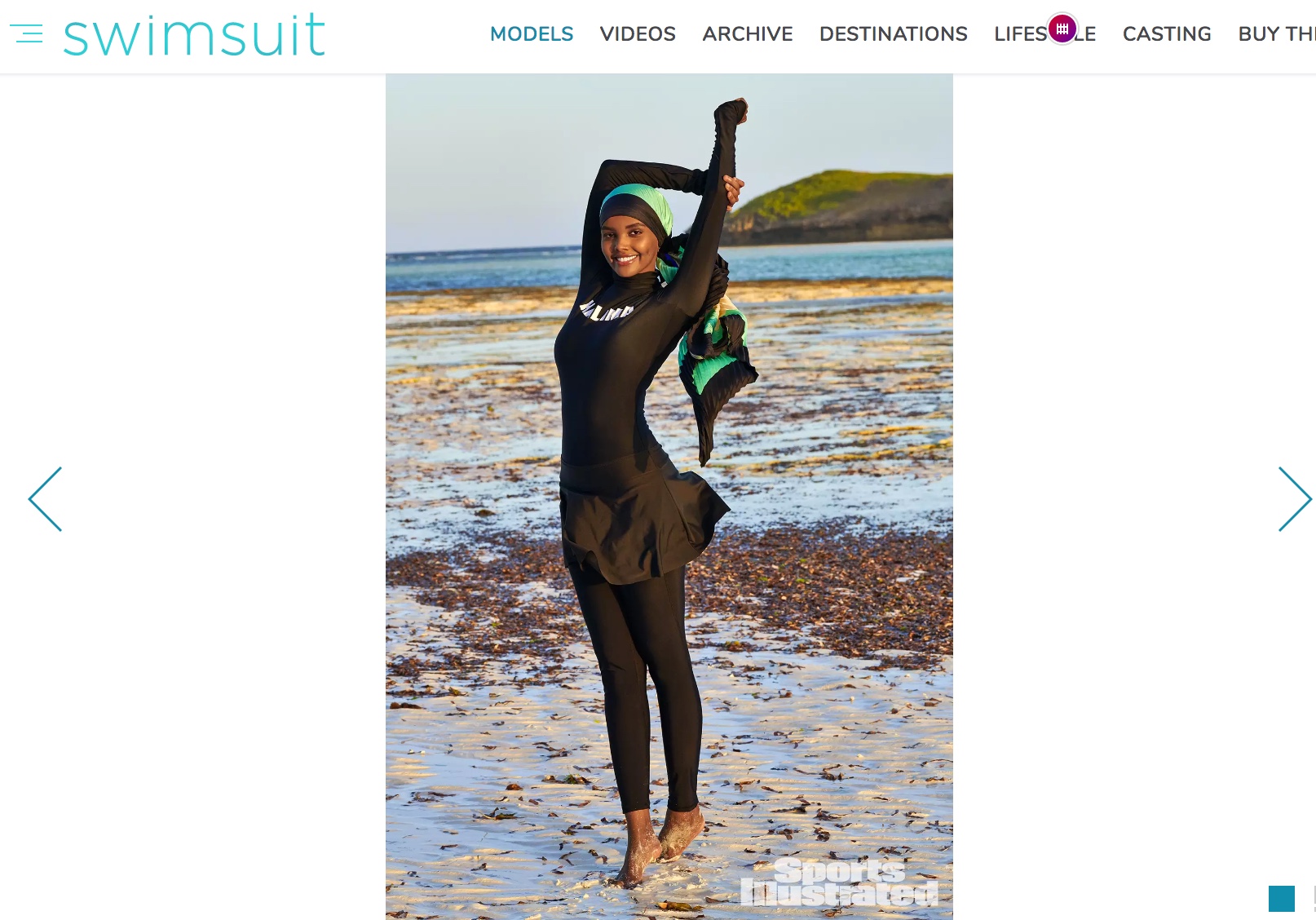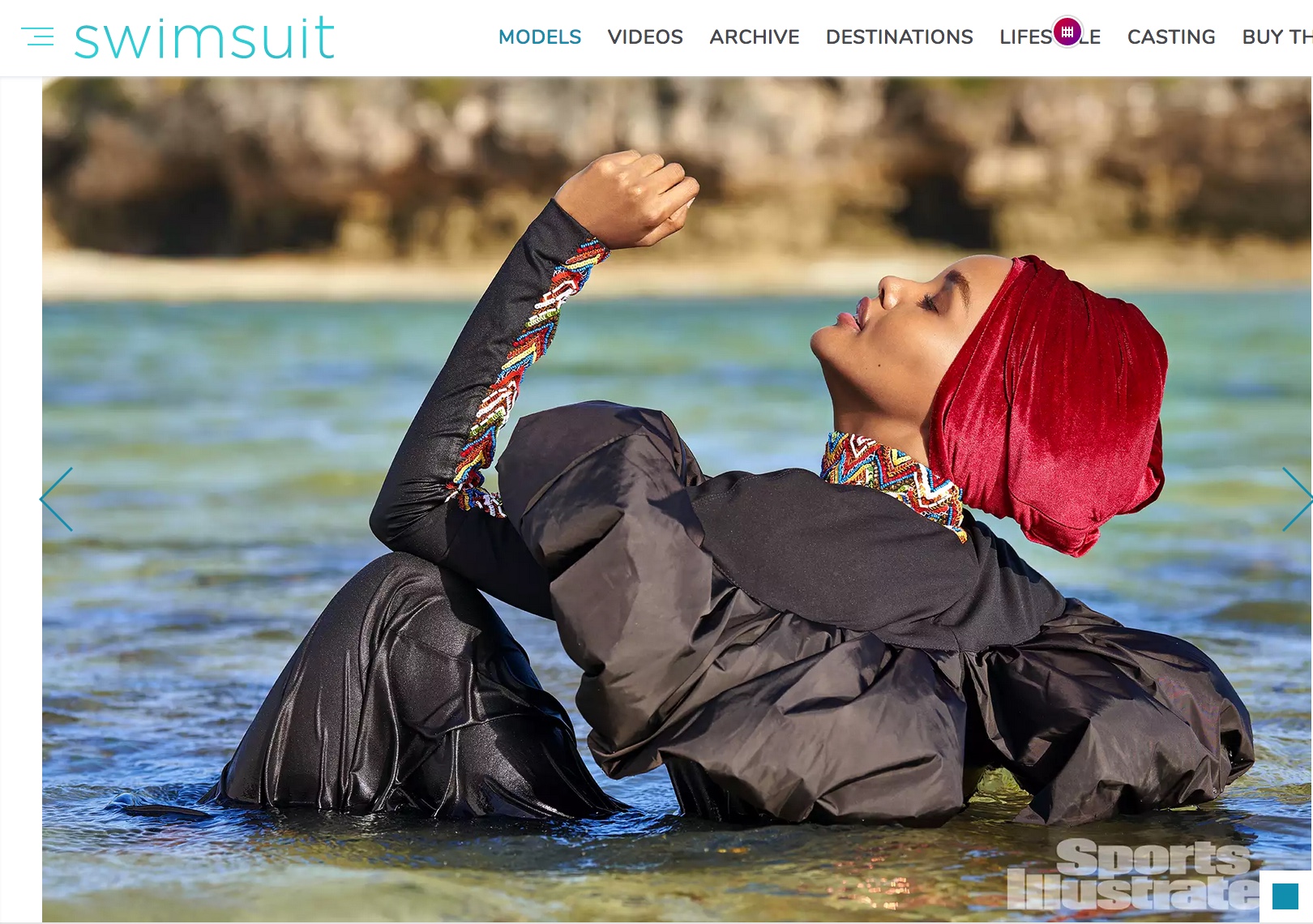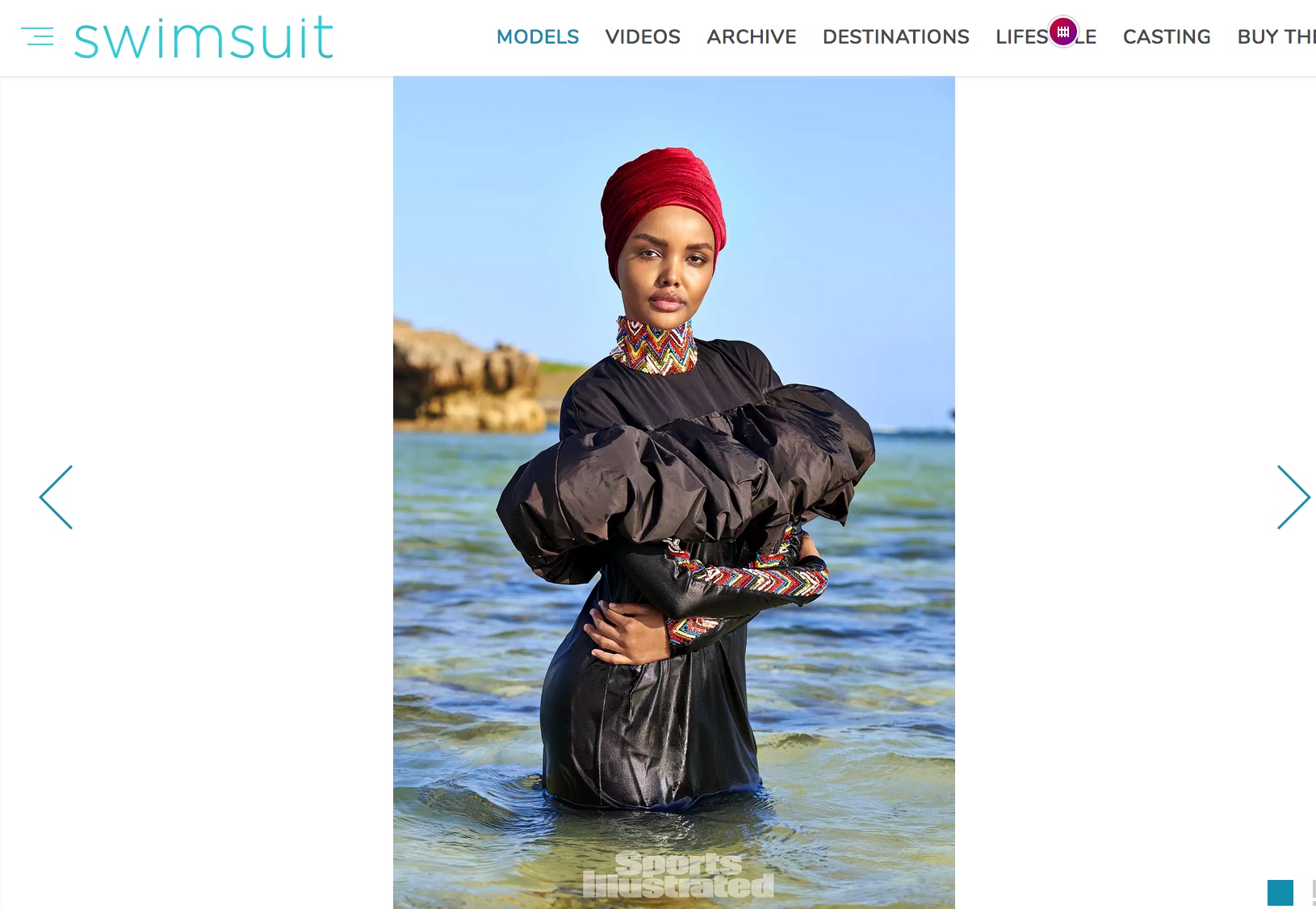Back in April of 2019, Sports Illustrated Swimsuit, for the first time in its 55-year history, published a model dressed in a hijab and burkini onto its cover. The Somali-American model, Halima Aden, was born in Kenya and lived at the Kakuma Refugee Camp until until she was 7 years old before moving to the United States, according to an article in Harper’s Bazaar. The photo shoot for this cover was shot in Kenya.
Says Halima of this milestone moment in her Instagram: "Don’t change yourself… Change the GAME!! Ladies anything is possible!!! Being in Sports Illustrated is so much bigger than me. It’s sending a message to my community and the world that women of all different backgrounds, looks, upbringings...can stand together and be celebrated."
What Does This Mean For Your Media Coverage?
From a media perspective, this cover photo and fashion spread creates conversation opportunities that can be timely at almost any time for you to create reasons to catch the media’s attention to feature your business. This is referred to as “piggybacking on a trend story” and is an easy trick to thinking up story angles that will catch the attention of a writer, editor or producer. For more on how to piggyback a trend story, see our TuneUp educational series for videos about it.
Examples Of Story Angles Around Halima Aden’s Cover Photo
Story angles will vary based on what your business is. Remember, you have permission to think up a reason for someone in the media to feature you’re business, and you’re doing it via this side-door way. This approach isn’t a “Hey! Feature my business because it’s awesome!”
No no - it’s the approach that is more like: “Hey - about that burkini fashion statement…Did you know that XY and Z…” You’re pitch is not going to sound that casual, but you get the drift. You are the expert. If for some reason this moment in history relates to something in your business - either a product you sell or a philosophy you put out as to what your business stands for - then attempting to attach your brand to this moment is worth the pitch to the media.
Take a look at the photo spread below from Sports Illustrated Swimsuit, and see a list of editorial ideas for directions you can go in when thinking up your pitch:
Story Angles
One way to get a neat story angle idea is to read through the Comments in articles or social media posts about this milestone moment. Reading the comments can be painful if they are from stone-throwers who are uneducated, spiteful, stubborn, or just reactionary. But, they give you an idea of where some people’s heads are at, and a story angle will present itself.
Where Did The Burkini Come From? Answer: An Australian designer, Aheda Zanetti, born in Lebanon who moved to Australia when she was 2, designed the burkini for Australian beaches after she watched her young niece play her first game of netball with her school, wearing a team uniform over more traditional Islamic attire. According to an interview with the Washington Post, Zanetti said: “When I looked at her, she looked like a tomato," Zanetti says. "I wanted to make sure we blended in with the Australian lifestyle."
Making Up Words (fun with trademarks, for all the attorneys in the house): Zanetti trademarked the word “burkini” and tried to protect it as its popularity grew all over the world. Fortunately or unfortunately for her, the word became like “kleenex” and instead of being traced back to her brand, became a universal word describing a style. Zanetti made up other words too, including “hijood”. According to that Washington Post article, an hijood is “a portmanteau of hijab and hood. It was a breathable and easy-to-put-on garment that would cover the head and allow modest Muslim women to play sports easily.”
Is The Burkini New? Not Really! Take a trip back to North America during the 1800-1900s where women waded into the water in full dresses and shoes, which got modified over the years as women moved around more in the water, and needed less fabric to weigh them down.
How Is Fashion Formed Through Need? As with North American white women during the 1800-1900s, traditional swimwear designed for modesty and complete sun protection to preserve whiteness was modified as women desired more movement in the water.
Is Sports Illustrated Swimsuit Catering To Women Now? Known for objectifying women in barely-there bathing suits, some men in comments felt put out and put upon by seeing a women completely covered. As you can see from the photo shoot above, the designs of the burkini are beautiful, are a celebration of fabric and color, and show the body in a different way. Is a body more exciting because it is fully exposed? Or because it has a combination of tight black with puffs of fabric? Total skin is sort of boring!
North American Fashion Is Heading Towards Full Coverage For Sun Protection Anyway: Look at the bathing suits for surfers or kids, and you’ll see lots of tops that are full sleeves. The bottoms are growing longer also as parents go to growing lengths to protect the as yet un-scorched skin of their children.
Designer Treatment Of Full Coverage Bathing Suits: Look at the designers in this spread at Sports Illustrated Swimsuit, including Cynthia Rowley and No Ka'Oi.
So many ideas.
How To Use Tin Shingle To Help You Pitch
So you have these ideas. Who do you pitch them to? This is where Tin Shingle’s Media Contact Library comes in really handy. You log into our PR Center, and head over to the Media Contact Library. You can search through the thousands of people we track in that database, and you’d start by putting in some Areas of Interest. Like:
“Women’s Interest” (you’d find names like Adam Glassman Creative Director at O, The Oprah Magazine, or Alenna Greco, a former Assistant Editor at Glamour who is now a freelance Editor rock star for Cosmopolitan Magazine.
“Designer Fashion” (you’d find Alexandra Michler, former Editor at Vogue and now Director of Fashion Development at Vogue).
So many more directions you could pursue in our Media Contact Library. Next step is to write just the right pitch for that person you found. You won’t be writing the exact same pitch to different editors. While that feels efficient, if often gets you crickets (aka silence and no responses). You’ll want to tailor this pitch to the right person. Tin Shingle’s Pitch Whisperer Community Support Group can help. Share your draft with us first in our safe space Community, and get feedback before you send!
All of this is included in Tin Shingle’s Membership Program. Check it out and get cranking on those pitches to get the word out about your business.











